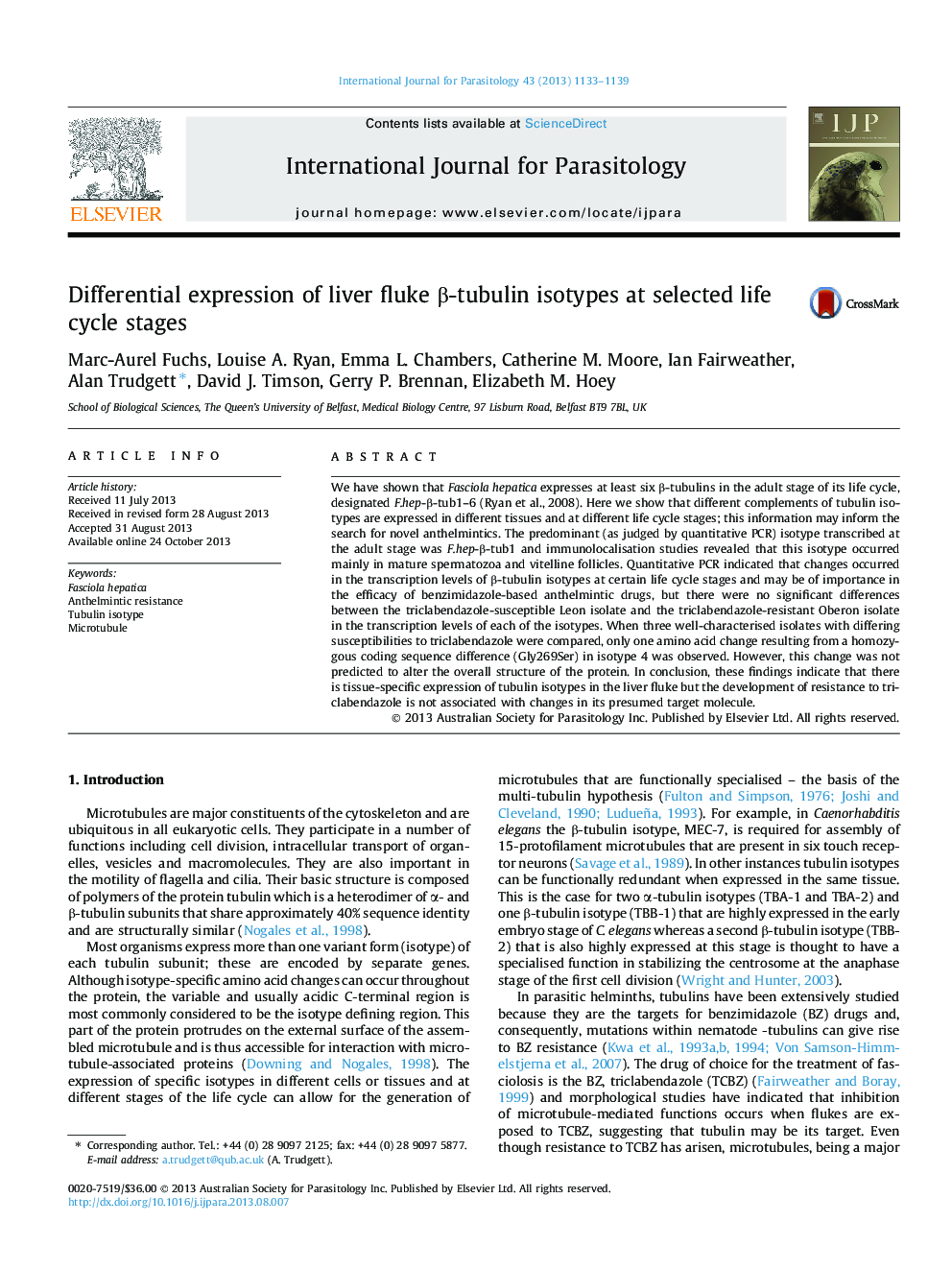| Article ID | Journal | Published Year | Pages | File Type |
|---|---|---|---|---|
| 2436119 | International Journal for Parasitology | 2013 | 7 Pages |
•Expression of β-tubulin isotypes in Fasciola hepatica varies with life cycle stage.•Triclabendazole-resistant and -susceptible isolates show similar levels of expression.•The most common isotype in adult flukes is associated with spermatozoa.
We have shown that Fasciola hepatica expresses at least six β-tubulins in the adult stage of its life cycle, designated F.hep-β-tub1–6 (Ryan et al., 2008). Here we show that different complements of tubulin isotypes are expressed in different tissues and at different life cycle stages; this information may inform the search for novel anthelmintics. The predominant (as judged by quantitative PCR) isotype transcribed at the adult stage was F.hep-β-tub1 and immunolocalisation studies revealed that this isotype occurred mainly in mature spermatozoa and vitelline follicles. Quantitative PCR indicated that changes occurred in the transcription levels of β-tubulin isotypes at certain life cycle stages and may be of importance in the efficacy of benzimidazole-based anthelmintic drugs, but there were no significant differences between the triclabendazole-susceptible Leon isolate and the triclabendazole-resistant Oberon isolate in the transcription levels of each of the isotypes. When three well-characterised isolates with differing susceptibilities to triclabendazole were compared, only one amino acid change resulting from a homozygous coding sequence difference (Gly269Ser) in isotype 4 was observed. However, this change was not predicted to alter the overall structure of the protein. In conclusion, these findings indicate that there is tissue-specific expression of tubulin isotypes in the liver fluke but the development of resistance to triclabendazole is not associated with changes in its presumed target molecule.
Graphical abstractFigure optionsDownload full-size imageDownload high-quality image (325 K)Download as PowerPoint slide
